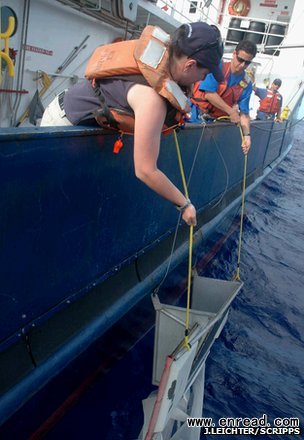|
  
- UID
- 86155
- 帖子
- 60350
- 积分
- 64892
- 学分
- 591606 个
- 金币
- 810 个
- 性别
- 男
- 在线时间
- 2779 小时

|
|
本帖最后由 xln1120 于 2012-5-9 17:47 编辑
The quantity of small plastic fragments floating in the north-east Pacific Ocean has increased a hundred fold over the past 40 years.
太平洋东北部海域上漂浮的小塑料片的数量在过去40年间增加了100倍。

The Scripps team trawled the surface of the ocean for floating debris
Scientists from the Scripps Institution of Oceanography documented the big rise when they trawled the waters off California.
They were able to compare their plastic "catch" with previous data for the region.
The group reports its findings in the journal Biology Letters.
"We did not expect to find this," says Scripps researcher Miriam Goldstein.
"When you go out into the North Pacific, what you find can be highly variable. So, to find such a clear pattern and such a large increase was very surprising," she told BBC News.
All the plastic discarded into the ocean that does not sink will eventually break down.
Sunlight and the action of the waves will degrade and shred the material over time into pieces the size of a fingernail, or smaller.
An obvious concern is that this micro-material could be ingested by marine organisms, but the Scripps team has noted another, perhaps unexpected, consequence.
The fragments make it easier for the marine insect Halobates sericeus to lay its eggs out over the ocean.
These "sea skaters" or "water striders" - relatives of pond water skaters - need a platform for the task.
Normally, this might be seabird feathers, tar lumps or even pieces of pumice rock. But it is clear from the trawl results that H. sericeus has been greatly aided by the numerous plastic surfaces now available to it in the Pacific.
更多英语新闻 |
|